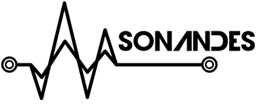CAREC MENTORSHIP AWARDS
How do you see your project developing during this mentorship, and what results do you expect from it?
My professional practices have focused on developing specific content for public space. In this way, the works intervene in the daily lives of people who are not always related to cultural consumption in public or private infrastructures, thus generating a cultural and social memory. Under this strategy I have connected with a more diverse public and have witnessed the collective opening towards community, communal and public dialogue.
I seek to develop touring exhibitions that can travel to the countries and communities of the creators, for this it is important to think about the materiality of the pieces and a sustainable and efficient way of mounting them.
My artistic practices engage creators from rural and peripheral areas that suffer from cultural extractivism, both curators and artists usually visit their communities to generate the work but almost never return to share the result.
In Bolivia, this is a situation that is repeated to such an extent that the communities have generated an explicit rejection. However, this phenomenon of exoticisation and cultural appropriation happens in most of the global south.
In addition to being able to share mentoring at a technical and logistical level, the most valuable thing for me is the accompaniment at a theoretical and conceptual level. This will guarantee a dialogue that will nurture the future curatorship and its coherence so that it can fulfill its objectives.
The curatorial project aims to connect the voices of creators from different latitudes. However, I consider the environmental crisis to be a problem of which we are all a part, it transcends nationalism and involves the human and the non-human. Therefore, I am interested in an approach that is not only multicultural but also multinaturalist.
Satellite image from Llipi lithium mine. Bolivia. Image Credit: European Space Agency
Tell us about how and why you became interested in the themes you are working with through your practice, and where you see this engagement going in the future?
In 2001 in Cochabamba-my hometown-the first Water War in history took place. In the last 20 years, Bolivia has lost 43% of its glaciers. The accelerated deterioration of the environment in the Andes has confronted me with my responsibility as an individual, to generate a process of collective creation and reflection that has the capacity to generate a voice that travels to different latitudes.
My research and artistic practice takes place in rural and peripheral areas, with levels of extractivism and very precarious working conditions. The community people identified the deposits as Wak`as -energy nodes and sacred spaces, living beings that are capable of re-establishing order between different planes and temporalities-. The sacred survived the Catholic evangelisation, a patriarchal and celestial God, the enlightenment places the human being at the centre of the story, dominating and organising nature, generating a rupture with non-human beings and a loss of balance with the environment.
Western culture places the sense of sight as the hegemonic sense. Occulocentrism and reason have developed a strong system of codes and discourses widely exploited in art, politics and thought. Most artistic production is linked to the production of content for the retina.
Sound has the quality of being invisible, a physical phenomenon that passes through matter, a vibration that invades us. It allows us to deconstruct the occulocentric world from other languages, codes and strategies, it has the capacity to sensitise people.
Aural culture and sound as plastic matter introduced me to deep listening. Listening does not simply refer to cochlear listening, listening is an act of empathy, of interest in understanding the other. Deep listening is to connect with the invisible, with the non-human in order to re-establish the multi-relationships and the balance that engages the planet as an ecosystem and not only as the garden of human beings.
Is that which has no matter invisible, or is that which we do not want to see invisible?
Lithium worker in Palca Research Plant. Bolivia, 2021 Image Credit: Sonandes
Tell us about your collaborators, your audiences, and anyone else you aim to serve. Who are you working with, and how are they involved in the process? Who are the ones being impacted by your work, and how?
Since the beginning of my career as a curator, I have developed processes of collective creation, linking scientists, artisans and creators from different latitudes with artists and local communities, a methodology that guides my work. The aim is to generate a space for the exchange of knowledge in order to reflect and mobilize society with regard to common objectives. As a curator I don’t work by compiling or selecting works already made, all my curatorial processes involve the creation of pieces collectively between communities, local artists or artisans and international guests. I understand the curatorial text as a provocation, a space open to change and evolution that is shaped by the different opinions and contributions of those involved. I am currently questioning «the public». Is a work public for intervening in public space? For years I believed this, but with the passage of time and experience I realized that a work is public to the extent that it involves different layers of society in its development and reflection. This reflection led me to question the public/spectator/audience. I believe that this way of referring to us lodges the spectacle in its entrails, I have renounced having an audience and I am constantly looking for strategies that allow me to have interlocutors. In this way I understand that the process of collective creation remains open and its reach goes beyond the creators and works in other layers of society.
What kind of relationships do you hope to build with the group and mentors during the programme?
My academic studies come from sociology, cultural studies and educational technologies, my training in art has been self-taught and this opportunity represents a great advance for my professional and professional development.
Being part of an international team that brings together creators from different continents will allow me to contrast reflections, points of view and learn from my colleagues in order to nurture a cultural exchange that I can later share with the rest of my collaborators.
Through the knowledge and experience of the people who will be part of the programme, I will be able to expand my field of work and connect with creators and environments that I do not have the possibility of accessing from the cultural structure that my country offers me.
I seek to build a relationship that encourages critical thinking, that questions our practices and ideas and in this way allows us to evolve our proposals and approaches.
It is particularly important to have the opportunity to connect with artists from Africa and Asia, as my project seeks to access artists from different continents of the global south, in order to nurture reflection on neo-extractivism, sacredness and deep listening.
My aim is to establish a long-term collaborative and working relationship with both the mentors and the group.

